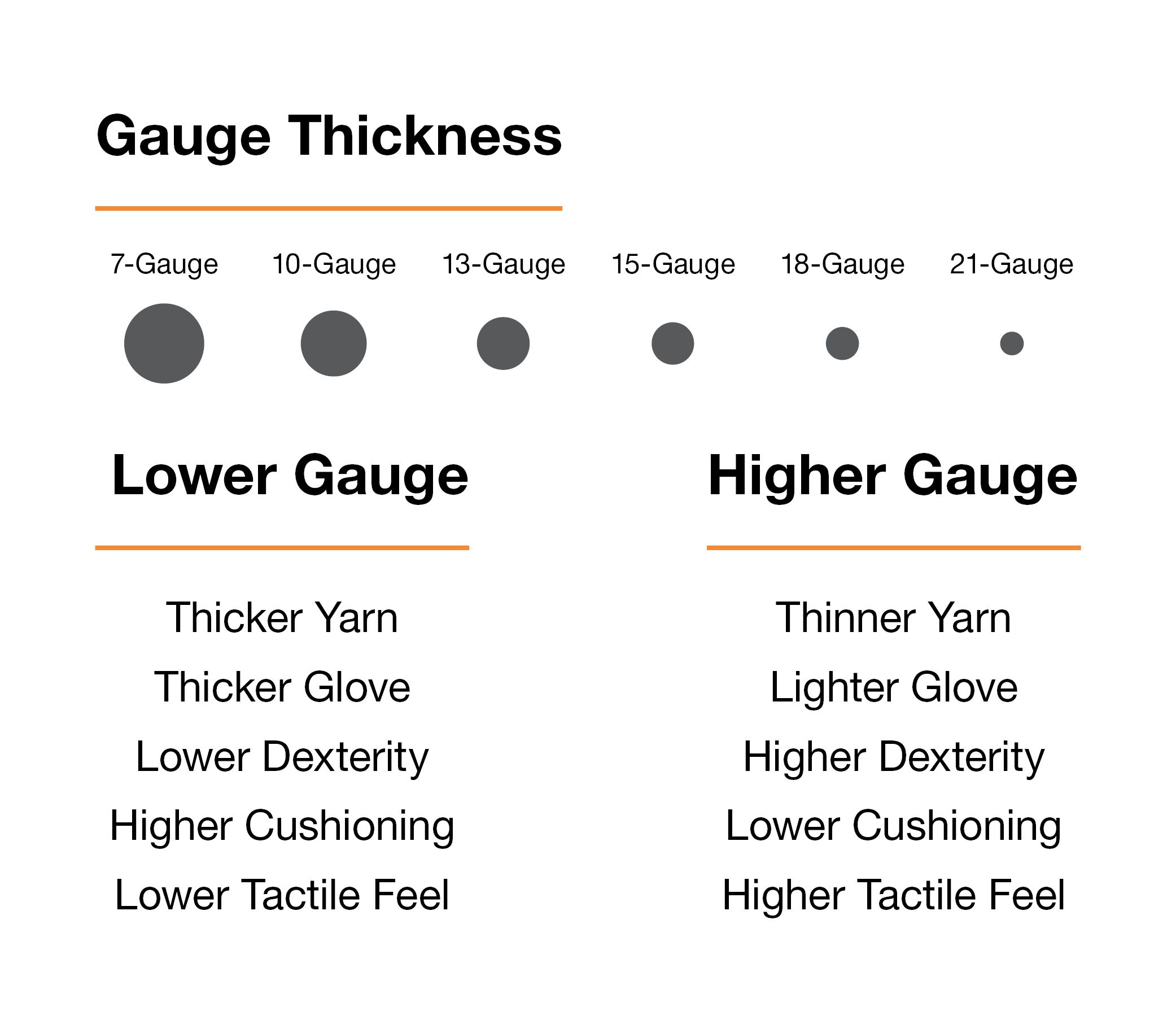Glove Gauge And Its Impact On The Use Of Cut-Resistant Gloves
Gauge is defined as the number of stitches included in each inch of yarn. As the number of stitches increase, so does the gauge. Note: Although gauge refers to the yarn, it’s common to hear it called glove gauge. This has the same meaning and is a shorthand way of referring to the thickness or thinness of a glove.
Below is a quick overview of glove gauges, including their thickness and dexterity level, and how they impact a glove’s feel and performance in tasks that involve cut hazards.


 English
English 中文
中文 Deutsch
Deutsch Español
Español Português
Português 日本語
日本語 русский
русский
